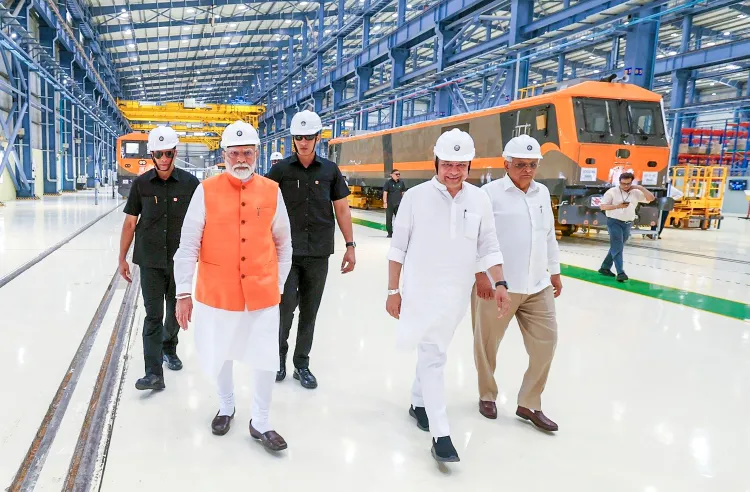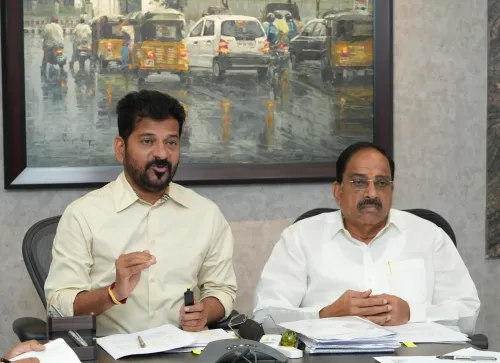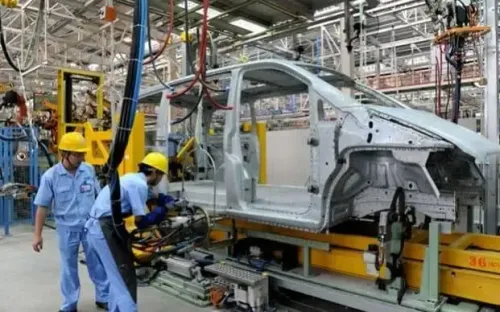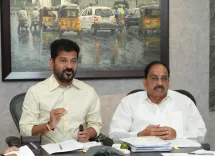How is Indian Railways Contributing to a Greener Future?

Synopsis
Key Takeaways
- Indian Railways is essential for achieving India's net zero emissions goals.
- Electrification has increased significantly in recent years.
- Rail transport is more cost-effective than road transport.
- Every train journey contributes to a cleaner environment.
- Collaboration with states aims to boost green energy usage.
New Delhi, June 5 (NationPress) Prime Minister Narendra Modi emphasized the vital role that Indian Railways is playing in creating a sustainable future through rapid electrification and a transition to clean energy.
"On World Environment Day, Railways Minister Ashwini Vaishnaw highlighted the significant contributions of Indian Railways towards a greener future. With swift electrification and a commitment to clean energy, it is poised to achieve net zero emissions," stated the Prime Minister’s Office on X, in response to the minister’s article.
“Opting for train travel instead of other modes isn’t just about comfort or convenience — it’s a choice for a cleaner, greener Bharat. Last year, over 700 crore people chose to travel via Indian Railways. It serves as our lifeline and a green promise for the future,” wrote Vaishnaw in his World Environment Day article.
The minister noted that Indian Railways is aiding the nation in achieving the 'Panchamrit' objectives set forth by Prime Minister Modi — aiming for net zero by 2070. This is being accomplished through a multifaceted approach that includes shifting traffic from roads to railways and powering operations with cleaner energy sources. Collectively, these efforts are facilitating large-scale decarbonization of India’s economy.
“PM Modi has set 2030 as the target year for Indian Railways to achieve net zero. Due to expedited electrification and significant cargo transfer from road to rail, Indian Railways is on course to realize net zero (Scope 1) by 2025," Vaishnaw explained.
In 2013-14, Railways transported approximately 1,055 million tonnes of cargo. This figure has surged to 1,617 million tonnes by 2024-25, establishing our Railways as the world’s second-largest cargo carrier. According to expert calculations, this shift from road to rail has enabled our country to save over 143 million tons of CO2 emissions, equivalent to planting 121 crore trees, Vaishnaw elaborated.
Transporting goods via rail is nearly half the cost compared to road transport. This results in substantial savings, not only for businesses but for the entire economy. This transition has helped save Rs 3.2 lakh crore in logistics expenses over the past decade, he added.
Vaishnaw further pointed out that Indian Railways is significantly cleaner, emitting 90 percent less carbon dioxide than trucks. This leads to reduced smoke in our skies and improved air quality. The shift from road to rail has saved approximately 2,857 crore litres of diesel, translating to savings of around Rs 2 lakh crore in fuel expenses.
“In the prior 60 years before 2014, Indian Railways electrified 21,000 kilometers of track. In the last 11 years, we have electrified 47,000 kilometers. Currently, 99 percent of the country’s broad gauge network is electrified,” the minister highlighted.
The Railways are increasingly adopting green energy for their stations, factories, and workshops. They are collaborating with states to secure additional green energy for train operations. This collective effort will assist India in reaching its net zero targets, Vaishnaw concluded.









